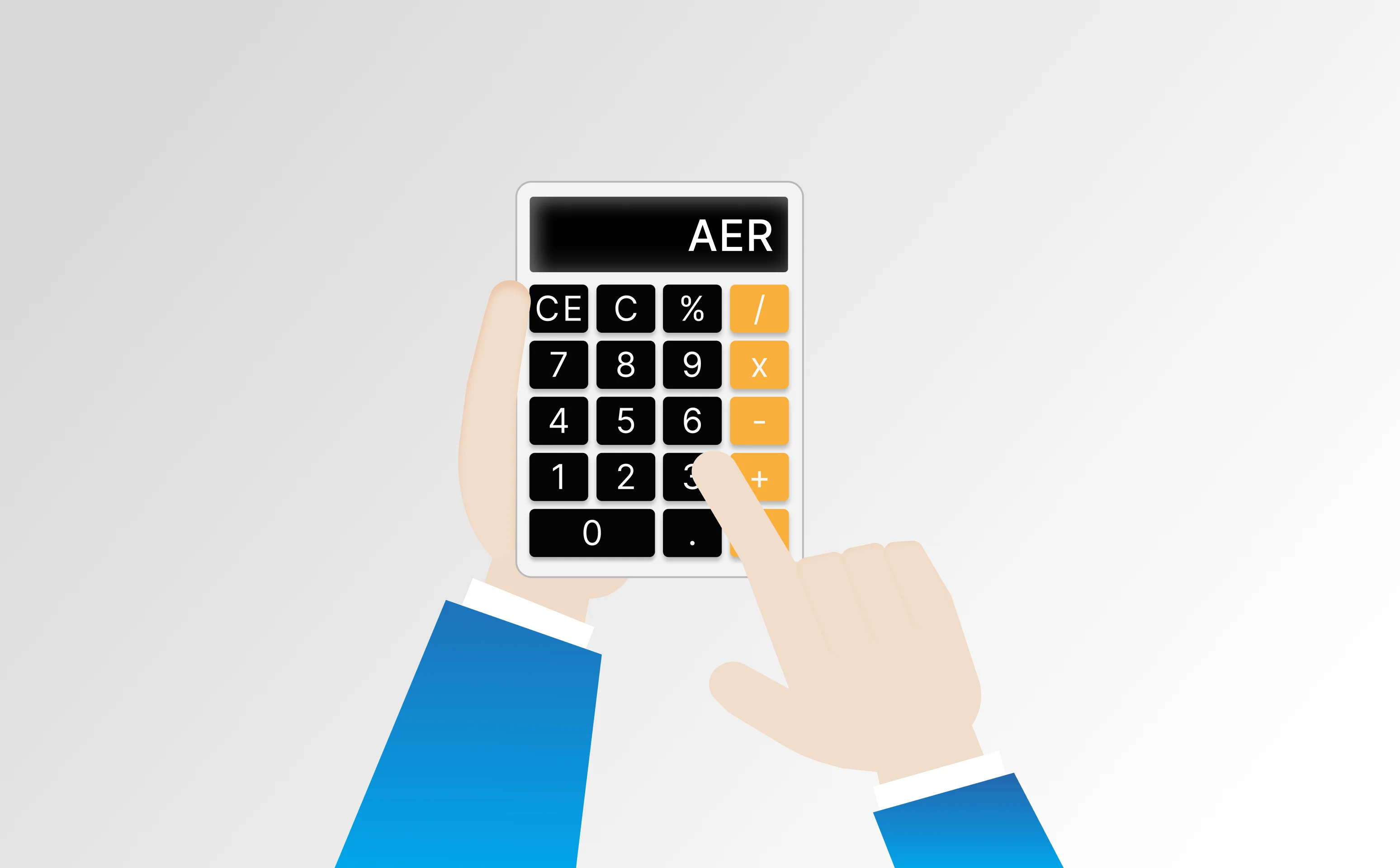Gross interest and AER

When comparing savings accounts, you'll frequently see terms like gross interest and
Annual Equivalent Rate (AER).
While both refer to the interest you earn, they serve different purposes. Gross interest
is the simple rate applied before tax and without considering compounding. AER, on the
other hand, reflects the true annual return by factoring in how often interest is
compounded.
Understanding the difference between these two rates is essential for choosing the best
savings account. AER provides a more accurate comparison, helping you evaluate accounts
with different compounding structures.
Gross interest
Basic interest rate:
Shows the interest rate before tax and compounding effects.
Nominal comparison:
Useful for understanding the base rate offered by an account.
No compounding included:
Does not account for how often interest is paid and reinvested.
AER (Annual Equivalent Rate)
Reflects real return:
Includes the effect of compounding over a full year.
Better for comparisons:
Useful for comparing accounts with different interest payment
frequencies.
Higher with frequent compounding:
More frequent interest payments increase the AER.
1. Gross interest
Gross interest refers to the simple interest rate applied to your savings, without taking
into account any compounding.
It's the rate of interest before tax, but more crucially, it doesn't consider how frequently
the interest is added to the balance over time.
Unlike simple interest, which is only calculated on the initial principal, compound
interest helps your money grow faster. The more frequently interest is compounded, the
greater the overall effect, making compound interest a crucial factor in long-term
investments and savings.
2. Formula for gross interest
Gross (or simple) interest is calculated solely on the principal, or the original investment
or
loan amount. Unlike compound interest, it does not take into account the accumulated
interest over time. As a result, simple interest leads to slower growth because the
interest is earned only on the principal, not on previously earned interest.
Formula: The formula for calculating simple interest is:
i = P × r × t
Where:
Example: If you invest £1,000 at an interest rate of 5% for 5 years,
the simple interest would be £250 (£1,000 × 0.05 × 5). This would bring the total amount
after 5 years to £1,250.
i = Gross interest, also known as simple interest
P = Principal (initial investment or loan amount)
r = Annual interest rate (as a decimal)
t = Time (in years)
3. Annual Equivalent Rate (AER)
AER is designed to give a more accurate reflection of how much interest you'll earn on your
savings over a year by factoring in the effect of compounding.
It assumes that interest is being paid and added back to the balance periodically, and this
added interest will itself start earning more interest.
- Interest growth: - Over time, the interest you earn starts to grow by itself, helping your savings grow faster.
- True annual return:: - AER reflects the actual return on your savings over a year, after considering compounding, and is often higher than the gross rate for accounts that compound interest.
- Standardised measure: : - AER is a useful comparison tool when evaluating accounts with different interest payment frequencies or structures, as it provides a clearer idea of overall earnings.
- Reinvestment of earnings: - Reinvesting your earnings leads to more growth as the reinvested interest starts earning interest itself.
4. Formula for Annual Equivalent Rate (AER)
Compound interest is calculated using a formula that accounts for the initial principal,
the interest rate, and the frequency with which the interest is compounded. This formula
helps you determine how much an investment or loan will grow over time with compound
interest.
Formula: The formula for calculating compound interest is:
A = P ( 1 +
r
n
)
nt
Where:
A = Final amount (principal + interest)
P = Initial, or principal amount
r = Annual interest rate
n = Number of times interest is compounded per year
t = Time, in years
Example:
If your savings account pays a 5% gross interest rate but compounds daily, the AER may be
around 5.13%, reflecting the extra interest you earn due to compounding.
5. Comparison table
Below is a table comparing the key differences between Gross Interest and Annual Equivalent
Rate, AER.
| Aspect | Gross Interest | Annual Equivalent Rate, AER |
|---|---|---|
| Definition | The interest rate before accounting for compounding. | The effective annual interest rate after compounding. |
| Compounding | Does not consider the impact of compounding periods. | Considers compounding, showing the actual return per year. |
| Formula |
I = P × r
|
AER = (1 +
r
n
)
nt − 1
|
| Purpose | Shows the nominal interest rate before compounding. | A comparison tool for understanding the true growth of savings over time. |
| Use Case | Useful for knowing the base rate offered by an account. | Ideal for comparing products with different compounding intervals. |
6. Impact of compounding frequency on AER
The frequency at which interest is compounded plays a critical role in determining the
total amount of interest earned or paid. Compounding can occur annually, semi-annually,
quarterly, monthly, or even daily. The more frequently the interest is compounded, the
higher the overall return or cost.
- Annual compounding: - Interest is calculated and added to the principal once a year. This is the simplest form of compounding.
- Quarterly or monthly compounding: - Interest is added more frequently (every three months or monthly), resulting in faster accumulation compared to annual compounding.
- Daily compounding: - Interest is calculated and added every day, which maximizes growth. This method is more commonly used in credit cards or loans, where it can increase the cost of borrowing.
Calculator
Gross to AER calculator
Try our calculator to explore how compounding frequency impacts the AER. For more
information on compound interest, read our guide
here.
Annual Equivalent Rate (AER):
Interpreting the result